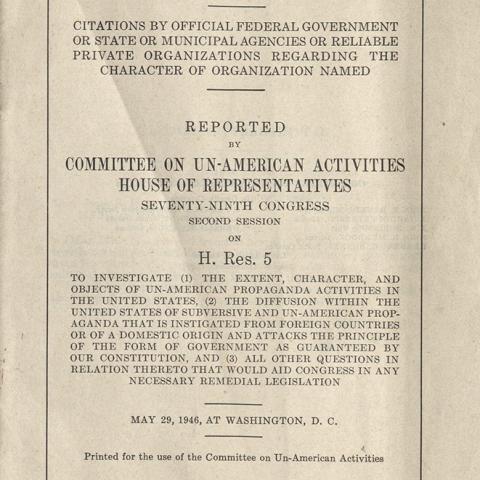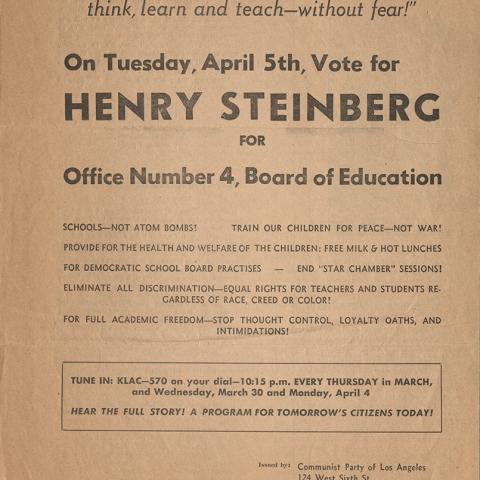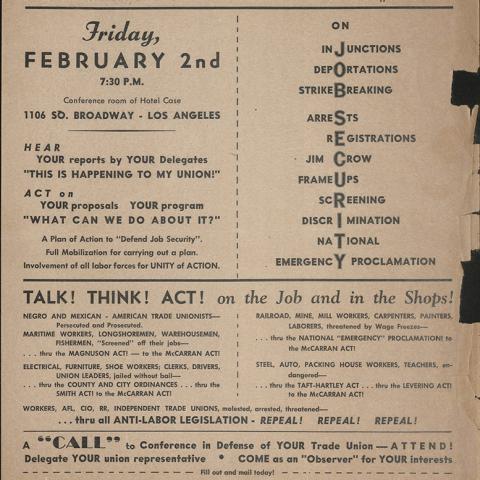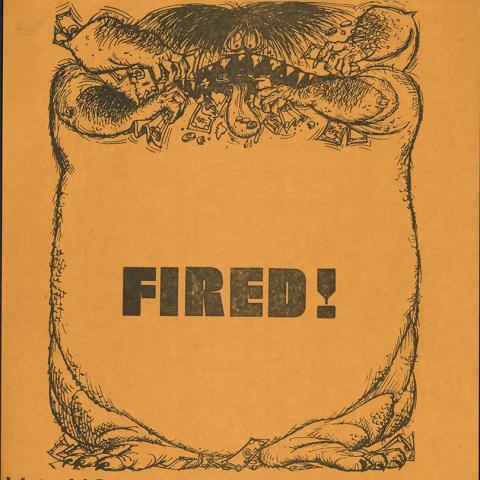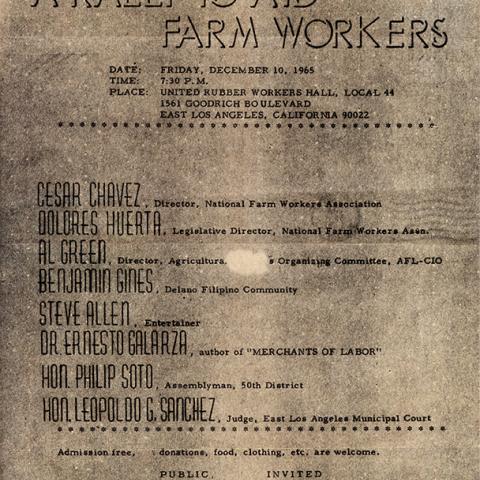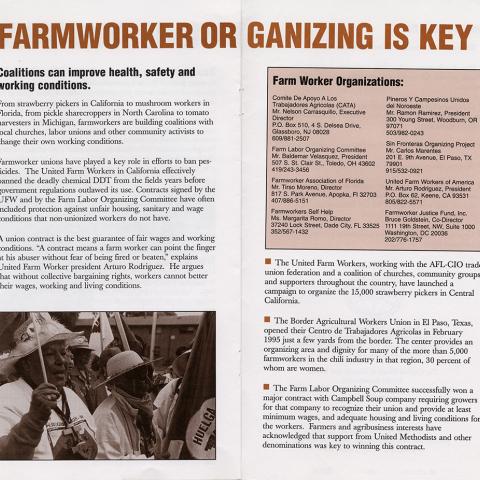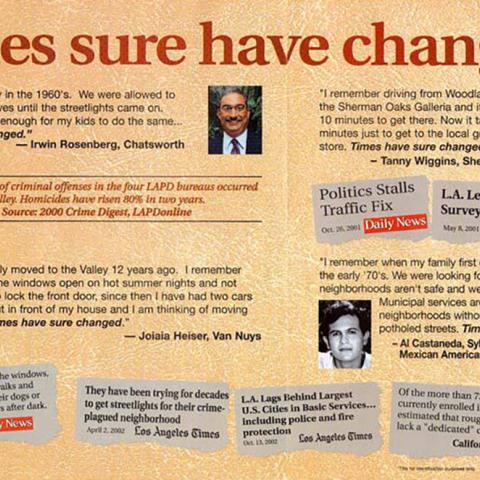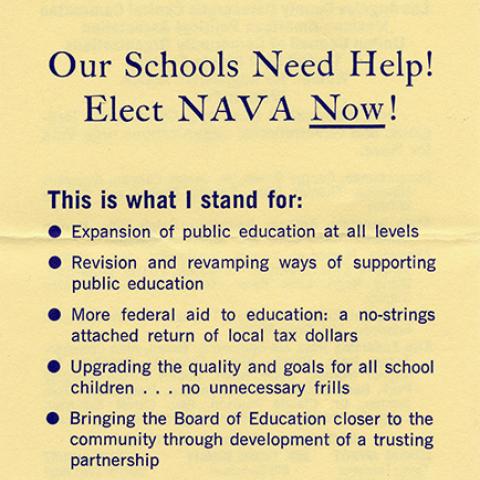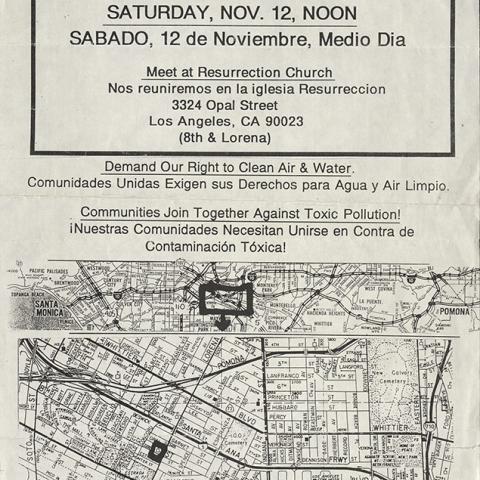Power and Politics in Print
April 16, 2024
As the 2024 election campaigns heat up, media are already shaping the battle of public opinion. Our commitment to digital information makes us a captive audience for political messaging. Aggregated news sites, email, and social media now form the “public square” through which power is negotiated and exercised. The efficacy of modern communication is undeniable, although not as original as it may seem. The archives are full of examples of documentation designed to target specific populations, and to disseminate with ease from person to person in order to apply pressure in pursuit of power and justice alike—from national governments to local communities.
Historically, broadcast programs, press, and print publications have been politically influential as mass media. However, smaller, more agile forms of print such as handbills, fliers, and pamphlets had immense influence on political outcomes of national and global scope. Previous posts of “Peek in the Stacks” have demonstrated the effects of printed leaflets on the Nazi surrender as well as countering the isolationist programming of “America First” movements and other anti-Semitic propaganda leading up to World War II. The Jewish Federation Council of Greater Los Angeles, Community Relations Committee Collection Part 2 contains numerous examples of such media as evidence, as well as their own materials used to rally support and resistance.
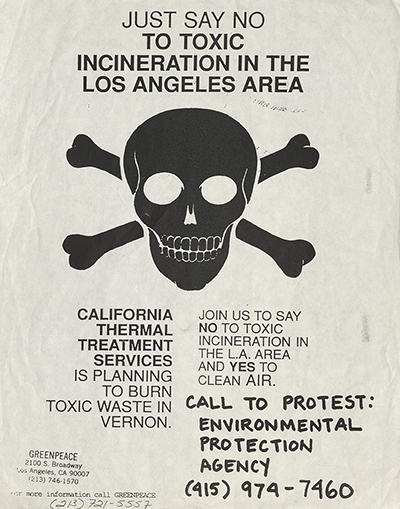 Following the war, a second Red Scare produced investigations by the U.S. government into communist and socialist organizations in the United States. The 1946 report by the House Committee on Un-American Activities can be found in the Gilbert G. Benjamin Jr. Subversive Activities Collection. Meanwhile, the U.S. Communist Party continued to advance in numbers in part by local party affiliates promoting their agendas and candidates through the circulation of handbills and other print media. The government associated unionization with communism and was among the activities they targeted. Promotional materials regarding this can be found in the Los Angeles County Federation of Labor Collection which covers labor and associated communities from 1860 to 2018.
Following the war, a second Red Scare produced investigations by the U.S. government into communist and socialist organizations in the United States. The 1946 report by the House Committee on Un-American Activities can be found in the Gilbert G. Benjamin Jr. Subversive Activities Collection. Meanwhile, the U.S. Communist Party continued to advance in numbers in part by local party affiliates promoting their agendas and candidates through the circulation of handbills and other print media. The government associated unionization with communism and was among the activities they targeted. Promotional materials regarding this can be found in the Los Angeles County Federation of Labor Collection which covers labor and associated communities from 1860 to 2018.
The post war expansion of labor unions required effective and frequent communication in order to inform members of leadership elections, initiatives, and events. Union strategies often included the use of print media to generate interest in the organization or sway members on specific issues. The California Federation of Teachers Collection features fliers and other handouts created to define positions on issues and influence members.
Residential communities are complex structures that provide a point of intersection between organizations such as churches, labor unions, Parent Teacher Associations, charitable societies, and so on. Today, social media applications facilitate intercommunication among local communities that in previous decades relied in part on the circulation and posting of print media. Issues affecting entire communities were debated in public meetings and explained through booklets and pamphlets in order to build consensus and consolidate power against local authorities and businesses. In the 1980s, Millie Moser Smith was a community organizer who utilized her church network to distribute literature that addressed labor issues affecting United Farmworkers. The Valley Voters Organized Toward Empowerment (VOTE) Collection features numerous print media from 1997-2002 that circulated amongst San Fernando Valley residents during its failed attempt at secession and cityhood.
Two CSUN professors worked diligently to elevate their East Los Angeles communities. Prior to becoming a U.S Ambassador, Dr. Julian Nava, represented the interests of his neighborhood as an elected member to the Board of Education from 1965 to 1979. As an activist, Dr. Mary Pardo helped empower her community against environmental injustice represented by the blocked construction of the toxic Vernon Incinerator in 1990.
These are only a few of the many examples of highly distributable print formats that empowered communities and organizations against the mass media representing more powerful political interests. Digital media significantly contributes to this legacy of providing political agency for organizations, communities, and people. However, in some ways it is inferior as targeted audiences now contend with too much information, and in some cases must compete with disinformation campaigns intended to obfuscate and distract.
Image Gallery
Post tagged as: urban archives, archives, publications, united states
Read more Peek in the Stacks blog entries
